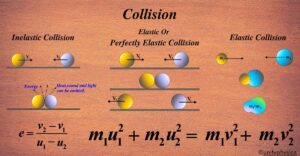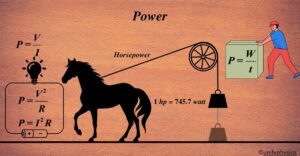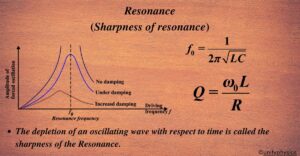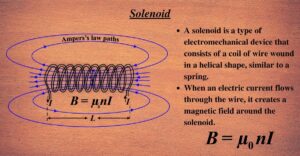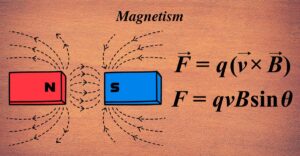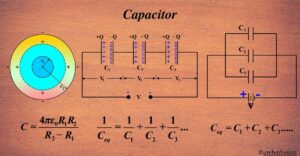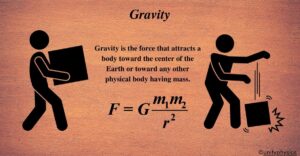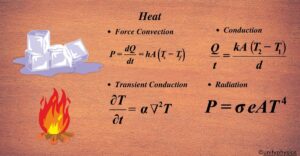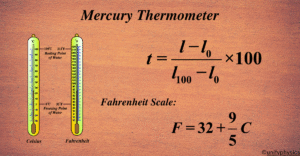
Mercury Thermometers
Temperature is something we all feel intuitively—hot or cold—but measuring it precisely requires a scientific approach. We'll break this down ...
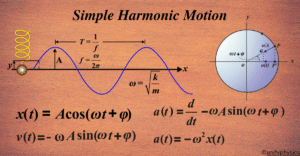
Simple Harmonic Motion
Long ago, in the early 1600s, a curious scientist named Galileo Galilei made an unusual observation inside a large cathedral ...
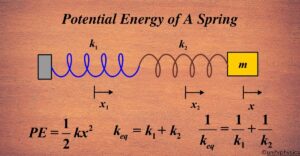
Potential Energy of A Spring
The story of springs and their potential energy is a fascinating one that stretches back centuries. Before we had the ...
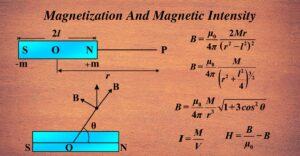
Magnetization and Magnetic Intensity
The story of magnetism begins with an ancient and naturally occurring mineral called lodestone. This special rock had the mysterious ...
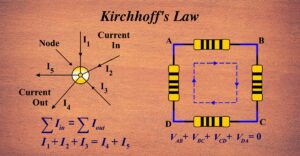
Kirchhoff’s Law
In the mid-19th century, a brilliant German physicist named Gustav Robert Kirchhoff made a significant discovery that would become a ...
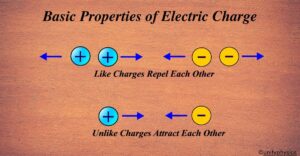
Basic Properties of Electric Charge
Long before the term 'electricity' was coined, ancient civilizations noticed strange forces at play. The Greeks, for example, found that ...
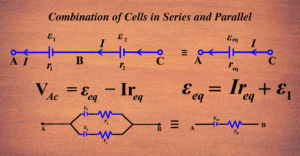
Combination of Cells in Series and Parallel
In 1800, Italian physicist Alessandro Volta created the first practical chemical cell, known as the voltaic pile. This groundbreaking invention ...
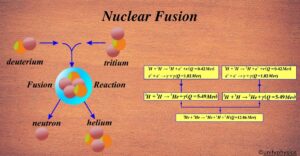
Nuclear Fusion
The journey into the history of nuclear fusion starts in the early 20th century. Scientists were curious about how stars, ...
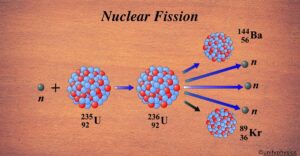
Nuclear Fission
The discovery of nuclear fission marked a significant milestone in atomic physics. It all began on December 19, 1938, in ...

Beta Decay
The discovery of beta decay traces back to the late 19th century. In 1899, Ernest Rutherford, a pioneering physicist in ...
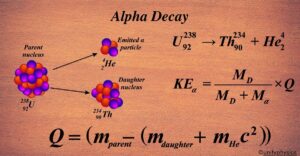
Alpha Decay
Alpha decay was first discovered by Ernest Rutherford in the early 20th century. While studying radioactivity, he found that certain ...
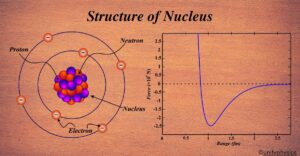
Structure of Nucleus
The journey into the heart of the atom began with Ernest Rutherford. In 1911, he proposed the nuclear model of ...
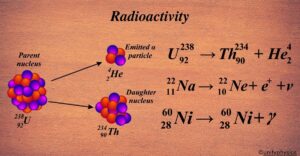
Radioactivity
The discovery of radioactivity was a serendipitous event that marked a significant milestone in the field of physics. It all ...

Atomic Mass and Composition of Nucleus
The idea of atoms as the fundamental building blocks of matter dates back to ancient Greece, but it wasn't until ...
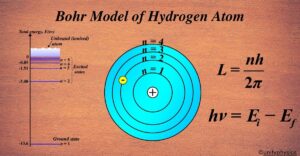
Bohr Model of Hydrogen Atom
Before Bohr, there was a quest to understand the atom's structure. In 1897, J.J. Thomson discovered the electron and proposed ...
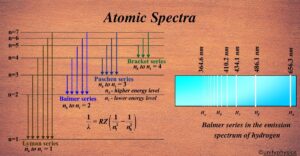
Atomic Spectra
The story of atomic spectra began long before the term was even coined. It's a tale of curiosity and discovery ...
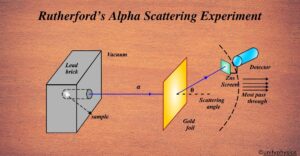
Rutherfords Alpha Scattering Experiment
Before Rutherford's experiment, the atom was thought to be a 'plum pudding'—a blob of positive charge with electrons dotted within, ...
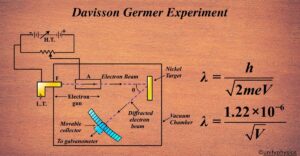
Davisson Germer Experiment
In the early 20th century, the nature of light was a hot topic. Scientists knew it behaved like a wave, ...
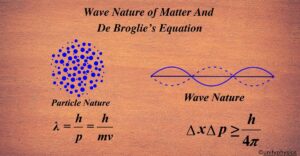
Wave Nature of Matter
The story begins in the early 20th century. Scientists were exploring the nature of light and matter. They discovered that ...
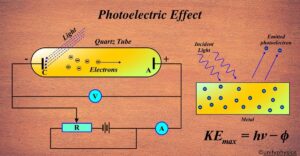
Photoelectric Effect
The story of the photoelectric effect begins in the late 19th century. In 1887, Heinrich Hertz discovered that ultraviolet light ...
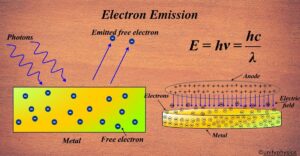
Electron Emission
Electron emission is a phenomenon that has intrigued scientists for over a century. It's like a detective story that began ...
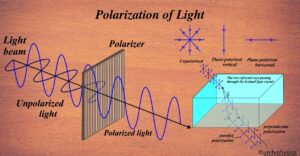
Polarization Of Light
The story of light polarization is quite fascinating and begins in the 17th century. It was a time of great ...

Diffraction of Light
The story of diffraction begins in the 17th century with an Italian scientist named Francesco Maria Grimaldi. He was the ...
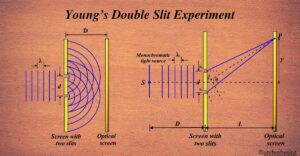
Young’s Double Slit Experiment
The story of Young's Double Slit Experiment begins in the early 19th century with a physicist named Thomas Young. At ...
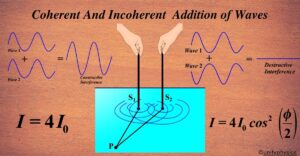
Coherent And Incoherent Addition of Waves
The journey into understanding coherent and incoherent waves begins with the fundamental nature of light and its wave-like behavior. Historically, ...
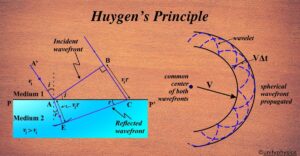
Huygens Principle
In the 17th century, light was a mystery. Some thought it was made of particles, while others believed it was ...
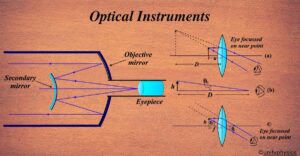
Optical Instruments
The story of optical instruments is as old as civilization itself, beginning with the ancient Egyptians and Mesopotamians who first ...
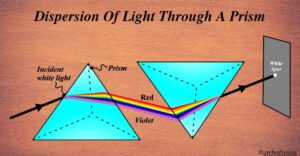
Dispersion Of Light Through A Prism
The story of light dispersion through a prism begins with the foundational work of Sir Isaac Newton in the 17th ...
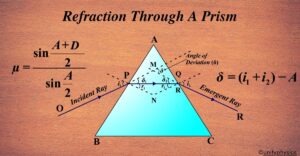
Refraction Through A Prism
For centuries, humans marveled at rainbows, their vibrant colors stretching across the sky after a rain shower. But how did ...
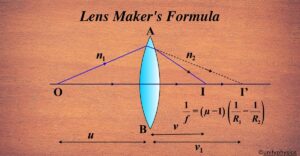
Lens Maker’s Formula
The journey of the Lens Maker's Formula begins with the craft of lens making, which dates back to the 13th ...
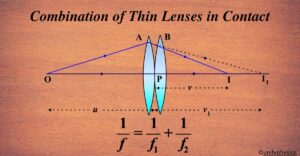
Combination of Thin Lenses in Contact
The concept of lenses has been around since ancient times. The first simple lenses were made from crystal or glass-like ...
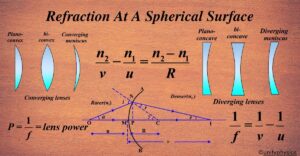
Refraction At A Spherical Surface
The concept of refraction through spherical surfaces has its roots in ancient civilizations. The Greeks were among the first to ...
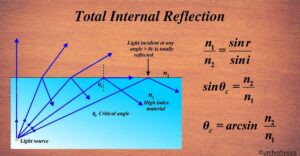
Total Internal Reflection
The concept of TIR has been known since ancient times, but it was not until the 17th century that significant ...
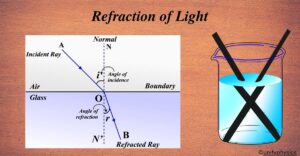
Refraction of Light
The understanding of light and its refraction has evolved over centuries. Imagine a time when the mysteries of light were ...
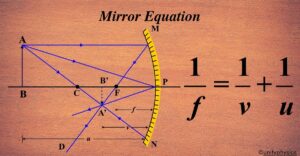
Mirror Equation
The mirror equation is a fundamental concept in the field of optics, which is the branch of physics that deals ...
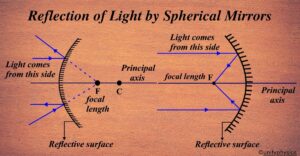
Reflection of Light by Spherical Mirrors
The phenomenon of reflection has been observed and pondered upon since ancient times. The earliest humans saw their reflections in ...
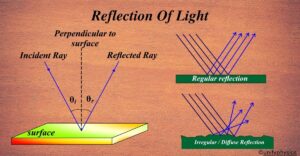
Reflection Of Light
In ancient Greece, around 300 BCE, Euclid, a prominent mathematician, proposed that light travels in straight lines and described the ...
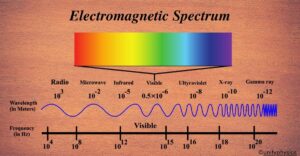
Electromagnetic Spectrum
The journey to understanding the electromagnetic spectrum began with early studies of light. In the 17th century, Isaac Newton made ...
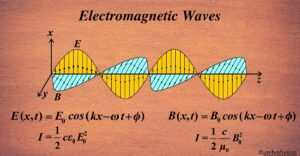
Electromagnetic Waves
The story of electromagnetic waves begins with the brilliant Scottish physicist James Clerk Maxwell. In the mid-19th century, Maxwell was ...
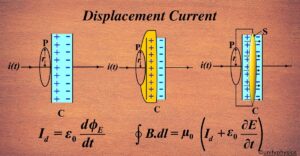
Displacement Current
The story of displacement current begins with a brilliant 19th-century scientist named James Clerk Maxwell. He was a Scottish physicist ...

Capillary Rise
The concept of capillary action dates back to the Renaissance period. The first recorded observation of this phenomenon was by ...
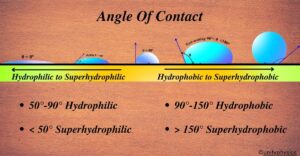
Angle Of Contact
The concept of the angle of contact is deeply rooted in the study of surface tension and capillarity. It was ...
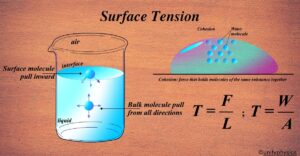
Surface Tension
The concept of surface tension has fascinated scientists for centuries. The ancient Greeks first observed it, and one of the ...
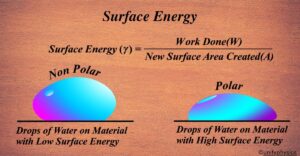
Surface Energy
The concept of surface energy has its roots in the observations and experiments of many scientists over the years. It's ...
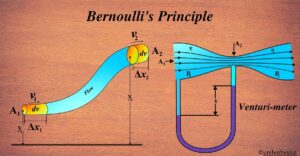
Bernoulli’s Principle
In the 18th century, a Swiss mathematician named Daniel Bernoulli was about to make a discovery that would change our ...
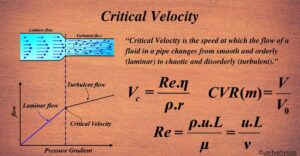
Critical Velocity
The concept of critical velocity has its roots in fluid dynamics and was developed to understand the behavior of fluid ...
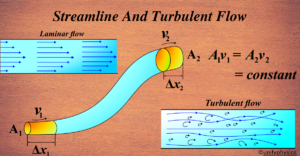
Streamline And Turbulent Flow
The concept of streamlined flow has been around for centuries, but it began to take shape with the work of ...
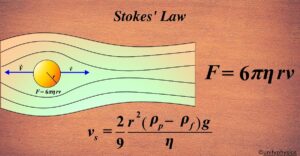
Stokes’ law
Imagine it's the mid-19th century, and scientists are fascinated by how things move in fluids. This is where Sir George ...
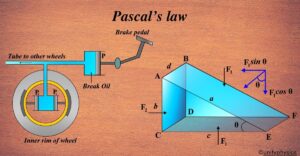
Pascal’s law
Pascal's Law states that when pressure is applied to a confined fluid, the pressure change occurs throughout the entire fluid ...
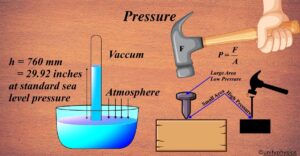
What is Pressure?
The concept of pressure was developed in the 17th century by scientists like Blaise Pascal and Evangelista Torricelli. They observed ...
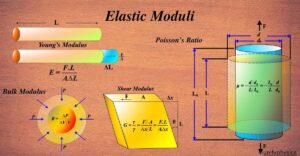
Elastic Moduli
The concept of elasticity dates back to the early scientific explorations of materials. Robert Hooke, an English scientist, first expressed ...
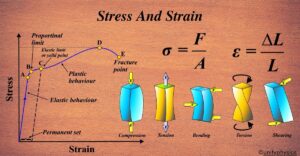
Stress And Strain
The study of stress and strain dates back to the early days of engineering and physics, where understanding the behavior ...

Elastic Behavior Of Solids
The concept of elasticity has been around for centuries, but it was during the scientific revolution of the 17th and ...
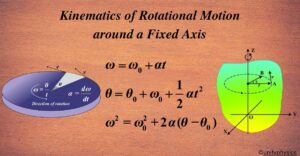
Rotational Motion Around A Fixed Axis
The study of rotational motion, or the motion of objects spinning around an axis, has a rich history that dates ...
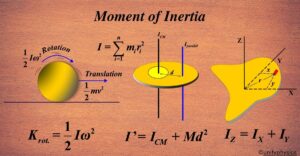
Moment of Inertia
The concept of moment of inertia was first introduced by Leonhard Euler in 1765. It emerged from the study of ...
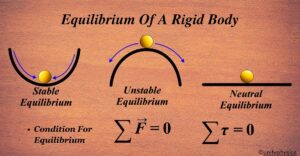
Equilibrium Of A Rigid Body
The concept of equilibrium is fundamental in physics and has been studied for centuries. It’s all about balance and the ...

Torque And Angular Momentum
The concepts of torque and angular momentum are rooted in the studies of rotational motion. Historically, scientists like Isaac Newton ...
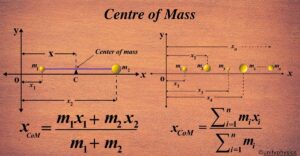
Centre of Mass
The concept of the Centre of Mass is deeply rooted in the work of ancient scholars and has evolved through ...
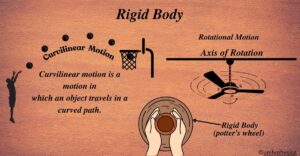
Rigid Body
The study of rigid bodies dates back to the early days of classical mechanics, a branch of physics that deals ...
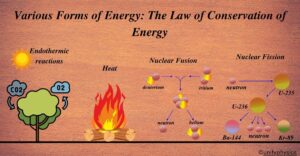
Various Forms of Energy: The Law of Conservation of Energy
Ancient philosophers, such as Thales of Miletus around 550 BCE, had inklings about the conservation of some underlying substance from ...
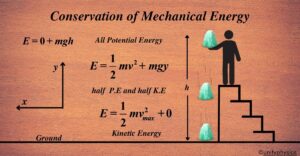
Conservation of Mechanical Energy
The concept of energy conservation is not new; it has been pondered upon since ancient times. The earliest inklings of ...
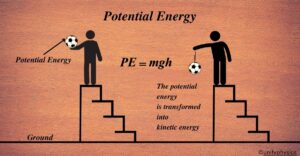
Potential Energy
The story of potential energy begins with the ancient Greeks, particularly with Aristotle's concept of "potentiality." Aristotle observed that objects ...
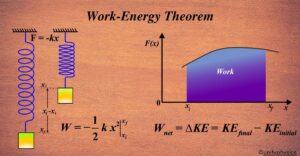
Work-Energy Theorem
The concept of the Work-Energy Theorem has been recognized for centuries, but it was not always stated in its current ...
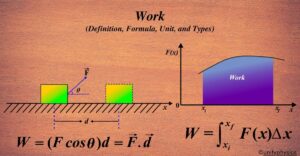
Work: Definition, Formula, Unit, and Types
The idea of work as a form of energy transfer dates back to ancient times, but it wasn't until the ...

Circular Motion
The story begins with the early astronomers who noticed the circular paths of stars and planets in the sky. They ...
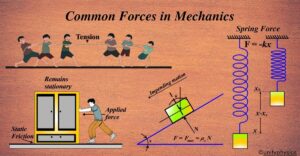
Common Forces in Mechanics
The concept of force has been a part of human curiosity for centuries. The modern understanding of forces in mechanics ...
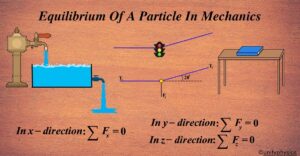
Equilibrium Of A Particle In Mechanics
The concept of equilibrium in mechanics has been around since the time of Aristotle, but it was Isaac Newton who ...
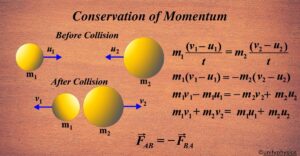
Laws of Conservation of Momentum
The concept of momentum conservation has been around since the time of Galileo, but it was Isaac Newton who formalized ...
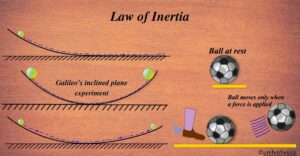
Law of Inertia
The Law of Inertia, often referred to as Newton's First Law of Motion, has a fascinating history that spans several ...

Uniform Circular Motion
The story of uniform circular motion begins with the ancient Greeks. Aristotle was one of the first to observe that ...
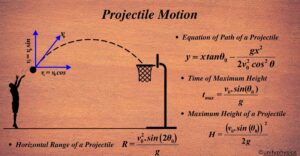
Projectile Motion
Long ago, people observed objects flying through the air, whether it was a rock thrown by hand or an arrow ...
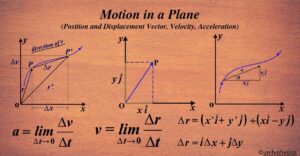
Motion in a Plane
The concept of motion in a plane, or two-dimensional motion, has been a subject of fascination and study for centuries ...

Scalars And Vectors
The concepts of scalars and vectors are deeply rooted in the history of mathematics and physics. They are essential tools ...
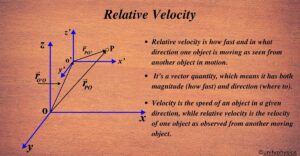
Relative Velocity
The concept of relative velocity is deeply rooted in the history of physics and our understanding of motion. It's a ...
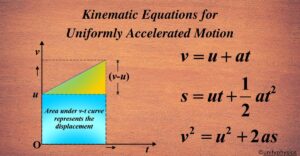
Kinematic Equations for Uniformly Accelerated Motion
The story of kinematic equations begins in ancient times with the need to understand the motion of celestial bodies. Early ...
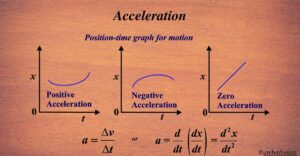
Acceleration
The concept of acceleration has been pivotal in physics, dating back to the works of Galileo Galilei and Sir Isaac ...
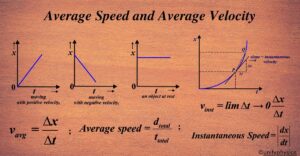
Average Speed And Average Velocity
The history of speed and velocity in physics is a fascinating journey that intertwines with the development of calculus and ...
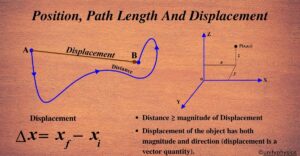
Position, Path Length And Displacement
Position The position is where an object is located in space relative to a reference point. It's like saying, "I ...

Frame of Reference
The concept of a frame of reference is like the backdrop of a theater stage—it sets the scene for where ...
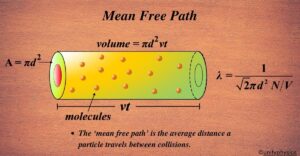
Mean Free Path
The concept of the mean free path has its roots in the kinetic theory of gases, which was developed in ...
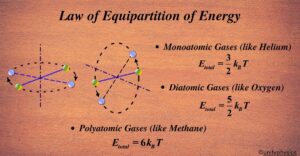
Law of Equipartition of Energy
The concept of energy distribution among particles has been a topic of curiosity and research for centuries. However, it was ...
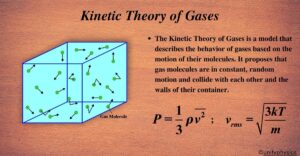
Kinetic Theory of Gases
The Kinetic Theory of Gases is a fundamental concept in physics that describes the behavior of gases at the molecular ...
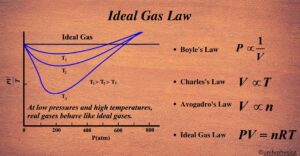
Ideal Gas Law
The story of the Ideal Gas Law is a tale of the discovery and the unification of several individual gas ...

Heat, Internal Energy, and Work
The concept of heat as a form of energy that flows from a hotter body to a cooler one was ...
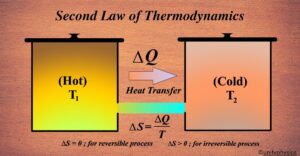
Second Law of Thermodynamics
The journey of the Second Law of Thermodynamics began in the early 19th century with the work of French engineer ...
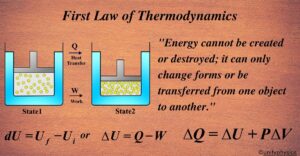
First Law of Thermodynamics
The First Law of Thermodynamics didn't just appear out of thin air; it was the result of many scientists' work ...
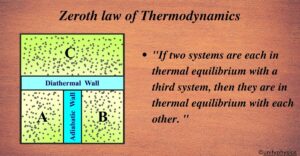
Zeroth Law of Thermodynamics
The story of the Zeroth Law of Thermodynamics is unique. It's a fundamental principle that was recognized after the first ...
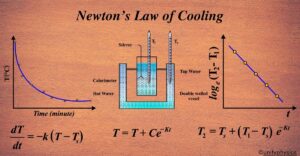
Newton’s Law of Cooling
Newton’s Law of Cooling is like a recipe for predicting how fast a hot object will cool down. It's named ...
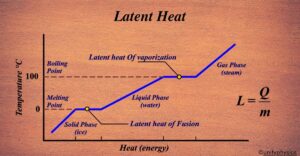
Latent Heat
The concept of latent heat is like a hidden chapter in the story of temperature and heat. It's the secret ...
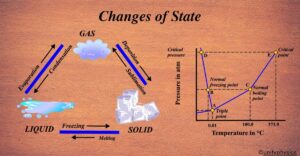
Changes of State
The story of changes of state is a tale of transformation, where substances dance between being solid, liquid, and gas ...
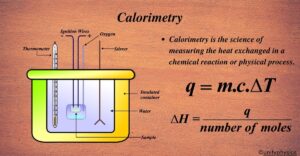
Calorimetry
Calorimetry is like the science of measuring the heat version of a story. It tells us how much energy is ...
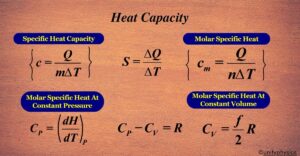
Heat Capacity
The story of the transformer begins in the 19th century. The principle of electromagnetic induction, which is the science behind ...
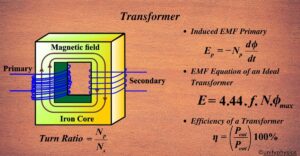
Transformer
The story of the transformer begins in the 19th century. The principle of electromagnetic induction, which is the science behind ...
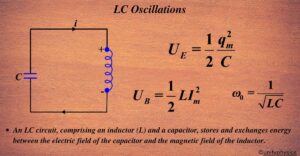
LC Oscillations
The concept of LC oscillations has its roots in the exploration of electrical phenomena in the late 19th and early ...
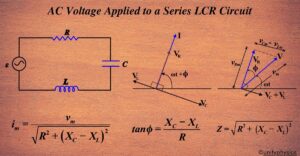
AC Voltage Applied to a Series LCR Circuit
The story of the LCR circuit begins with the fundamental understanding of electricity and magnetism. In the 19th century, scientists ...
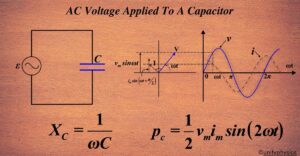
AC Voltage Applied To A Capacitor
The journey of capacitors began in the 18th century. The first device capable of storing electric charge was the Leyden ...
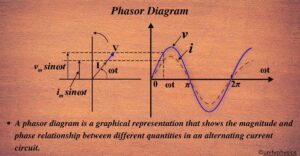
Representation of AC Current And Voltage By Phasor Diagram
The story of phasors begins with the need to simplify the mathematics of alternating current (AC) circuits. In the late ...
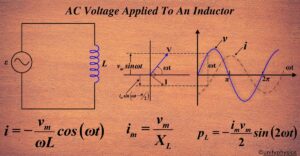
AC Voltage Applied To An Inductor
The story of the inductor begins with the pioneering work of Michael Faraday. In 1831, Faraday conducted a series of ...
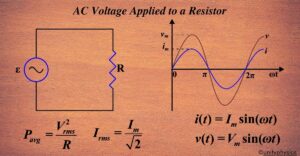
AC Voltage Applied To A Resistor
The concept of AC (Alternating Current) voltage is rooted in the late 19th century during the "War of the Currents." ...
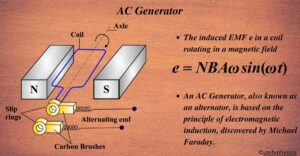
AC Generator
The story of the AC Generator, also known as an alternator, is a fascinating chapter in the history of electricity ...
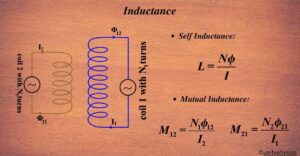
Inductance
The story of inductance begins in the early 19th century with the observation of electromagnetic phenomena. Ancient civilizations were aware ...
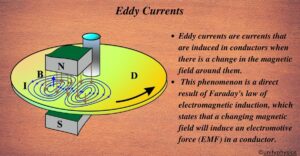
Eddy Currents
The phenomenon of eddy currents has been around since the beginning of electromagnetism, but it wasn't until the 19th century ...
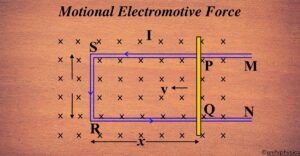
Motional Electromotive Force
The story of Motional EMF begins with the pioneering work of Alessandro Volta in the early 19th century. In 1801, ...
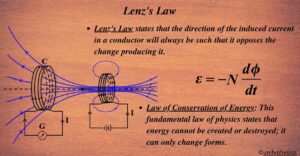
Lenz’s Law
Lenz's Law is named after the German physicist Heinrich Friedrich Emil Lenz, who formulated it in 1834. Lenz was not ...
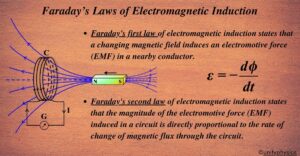
Faraday’s Laws of Electromagnetic Induction
The early 19th century was an era of rapid progress in understanding electricity and magnetism. Before Faraday, scientists like Hans ...
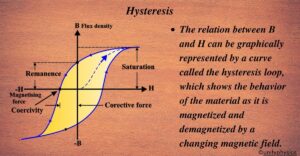
Hysteresis
The story of hysteresis begins in the 19th century, but its roots stretch back to ancient times. The word "hysteresis" ...
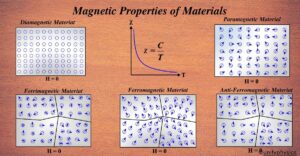
Magnetic Properties of Materials
The story of magnetism began over 2,500 years ago with the discovery of lodestones. These are naturally occurring magnets, found ...
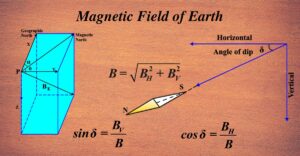
Magnetic Field of Earth
The story of Earth's magnetic field is as old as the planet itself. It's a tale of discovery, mystery, and ...

Bar Magnet
The story of bar magnets begins with the discovery of lodestones, naturally magnetized pieces of the mineral magnetite, which were ...
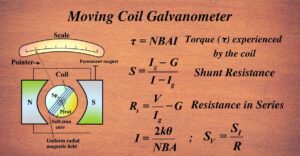
The Moving Coil Galvanometer
The moving coil galvanometer is a refined version of the original galvanometer, which was an early instrument used to detect ...
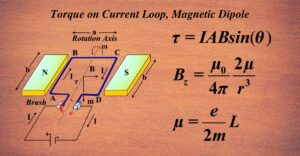
Torque on Current Loop, Magnetic Dipole
The 19th century was a period of remarkable scientific discovery, particularly in the field of electromagnetism. Before this era, electricity ...
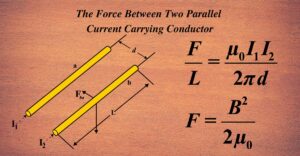
The Force Between Two Parallel Current Carrying Conductor
The story begins in the early 19th century. Before this time, electricity and magnetism were thought to be unrelated phenomena ...
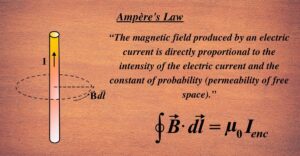
Ampère’s Law
The story of Ampere's Law begins with a remarkable discovery in the early 19th century. In 1820, Danish physicist Hans ...
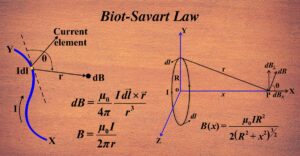
Biot-Savart Law
The story of the Biot-Savart Law begins in the early 19th century with two French physicists, Jean-Baptiste Biot, and Félix ...
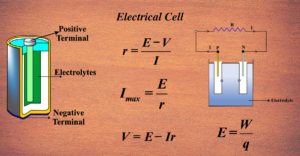
Electrical Cell
An electric cell is a device that converts chemical energy into electrical energy by using electrodes and an electrolyte. An ...
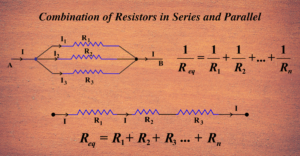
Combination of Resistors in Series and Parallel
Combination of Resistors in Series The combination of resistors in series is a way of connecting two or more resistors ...
Electrical Energy and Power
Electrical energy is an important concept in physics and engineering, as well as a practical necessity for everyday life. Electrical ...
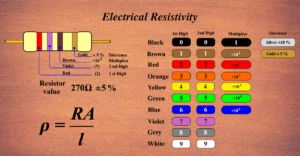
Electrical Resistivity
What is Electrical Resistivity Electrical resistivity is a concept that tells us how difficult it is for electric current to ...
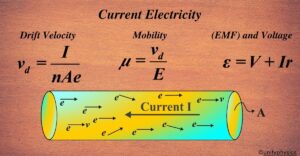
Current Electricity
The story of current electricity is not just about circuits and wires; it's a tale of human curiosity and ingenuity ...
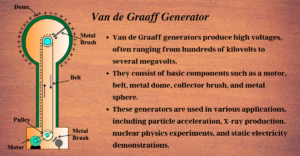
Van de Graaff Generator
The Van de Graaff Generator, a remarkable invention in the field of electrostatics, was the brainchild of Robert J. Van ...
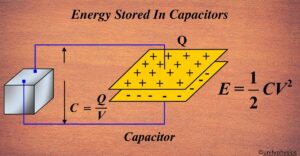
Energy Stored In Capacitors
The story of capacitors begins in the mid-18th century. Two European scientists, Ewald Georg von Kleist, and Pieter van Musschenbroek, ...
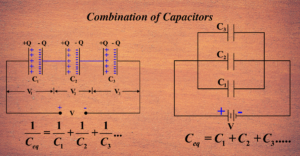
Combination of Capacitors
The journey of capacitors began in the 1740s with the invention of the Leyden jar. This was a simple device ...
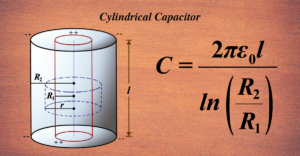
Cylindrical Capacitor
The journey of capacitors begins in antiquity. The ancient Greeks discovered that amber when rubbed, could attract light particles—a phenomenon ...
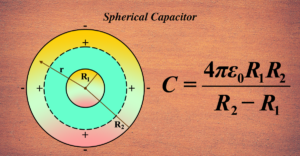
Spherical Capacitor
The story of capacitors begins in the 18th century. It was a time of wigs, quills, and the birth of ...
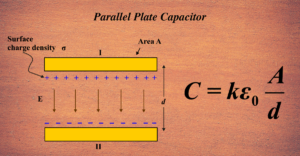
Parallel Plate Capacitor
In the mid-18th century, during a period known as the Enlightenment, two scientists, Ewald Georg von Kleist and Pieter van ...
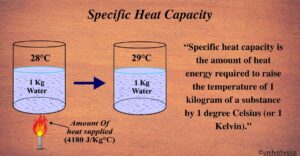
Specific Heat Capacity
In the 18th century, the study of heat and temperature was a hot topic among scientists. One of the key ...
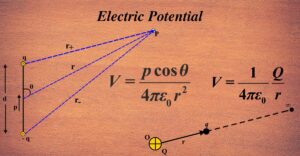
Electric Potential
The story of electric potential began long before the term itself was coined. In the 17th century, pioneers like Otto ...

Gauss’s Law And Its Application
The story of Gauss's Law begins with Joseph-Louis Lagrange in 1773, who first formulated the law in the context of ...
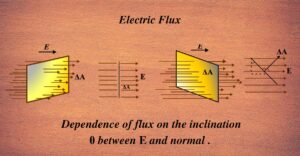
Electric Flux
The concept of electric flux emerges from the work on electricity and magnetism that began in the 18th century. During ...
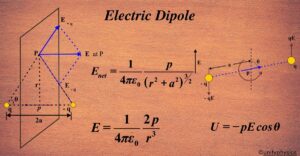
Electric Dipole
Before the term 'electric dipole' was formally defined, early scientists observed that certain materials could attract or repel each other ...

Electric Field Lines
The concept of electric field lines is deeply rooted in the work of Michael Faraday, a renowned 19th-century scientist. Faraday ...
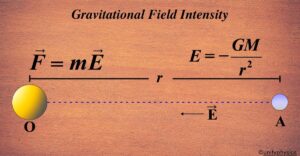
Gravitational Field Intensity
The story of gravity begins in ancient times. Greek philosopher Aristotle believed that objects fell towards the Earth due to ...
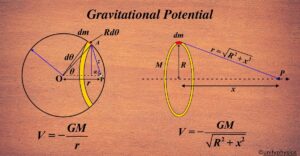
Gravitational Potential
The story of gravitational potential begins with the ancient Greeks. They were the first to start thinking deeply about the ...

Universal Law of Gravitation
Long before Newton, ancient civilizations had their interpretations of gravitational phenomena. The Greeks, for example, observed that objects fall towards ...
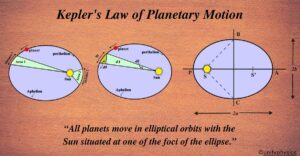
Kepler’s Law of Planetary Motion
The story of Kepler's Laws begins with the meticulous observations of the heavens by Tycho Brahe, a Danish nobleman and ...
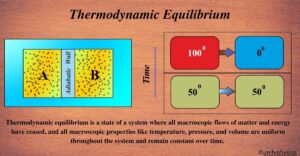
Thermodynamic Equilibrium
The journey into understanding thermodynamic equilibrium began in the 19th century. It was a time when steam engines were transforming ...
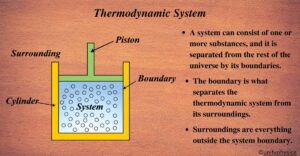
Thermodynamic System
In the 18th century, the invention of the steam engine was a pivotal moment. It was the workhorse of the ...
Semiconductor
The journey of semiconductors is quite fascinating and pivotal to the technology we use today. It all began in the ...
Types of Semiconductors
The journey of semiconductors began in the early 19th century when their unique properties were first observed. However, it wasn't ...
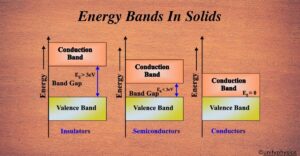
Energy Bands In Solids
In the early 20th century, scientists were making huge strides in understanding the quantum world. They discovered that electrons orbit ...
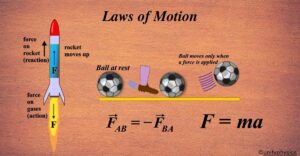
Laws of Motion
The story of the Laws of Motion is a fascinating journey through time, beginning with ancient philosophers and culminating in ...
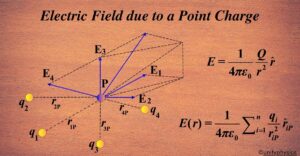
Electric Field Due To A Point Charge
The idea of an electric field emerged in the mid-19th century, thanks to the pioneering work of Michael Faraday. Faraday ...
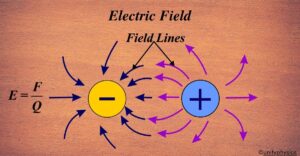
Electric Field
The story of the electric field begins in the early 19th century with a brilliant scientist named Michael Faraday. Faraday ...
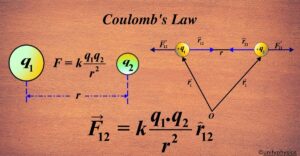
Coulomb’s Law
The story of Coulomb's Law begins with a French physicist named Charles-Augustin de Coulomb. In 1785, Coulomb made a groundbreaking ...
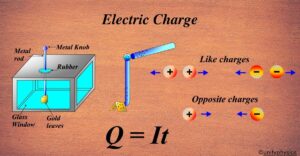
Electric Charge
The story of electric charge begins in ancient times. The Greeks were among the first to discover electrical phenomena. Around ...
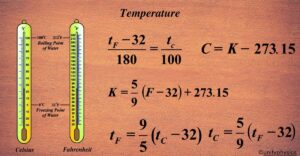
Temperature
The concept of temperature—how hot or cold something is—has fascinated humans for centuries. Even ancient civilizations noticed the effects of ...
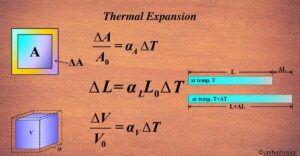
Thermal Expansion
The concept of materials expanding with heat has likely been observed since ancient times, as people noticed that hot days ...
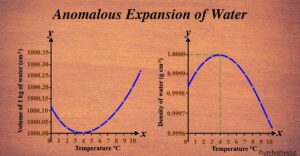
Anomalous Expansion of Water
The story of water's peculiar behavior begins in the mid-19th century. In 1859, a British scientist named W.J.M. Rankine made ...

